It can feel very frustrating when you put in the time and effort to train your dog, but she seems unwilling to respond to your cues or directions.
The good news is there are ways you can increase a stubborn pup’s motivation and responsiveness to move toward your training goals.
We’ll share the top tips and tricks trainers use to teach “stubborn” dogs, as well as the most important mistakes to avoid below!
We’ll be using the term “stubborn” in this article because it’s commonly used by dog owners. However, labeling dogs as stubborn isn’t really accurate or helpful.
“Stubborn” suggests a dog knows what you’re asking but is willfully disobeying.
In reality, dogs are complex, sentient creatures with many reasons for not doing something. They need understanding, not a label.
9 Tips for Training Stubborn Dogs

Here are some tips that can help you turn your stubborn dog into a more responsive pup who is eager to listen and learn.
1. Slow down.
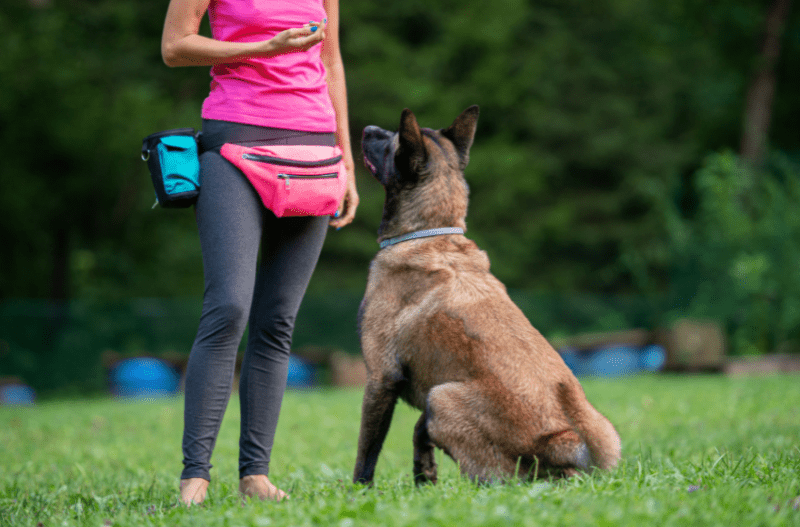
Break your training goal into baby steps.
Trainers call this “splitting.”
As an owner, you understand the outcome you are after, but your dog has no idea. When you ask for too much too quickly, your dog may become confused or frustrated and give up.
So, try to increase the difficulty level slowly – especially as it relates to the “three Ds.”
In other words, slowly change the:
- Duration or the skill (asking a dog to continue laying down for increasing lengths of time).
- Distances involved (how far away you move away while expecting him to continue lying down).
- The number of distractions he must ignore (such as other doggos frolicking nearby).
This approach will actually help you progress more quickly because your dog feels confident and successful at every stage. It can help to write down your training goal and then the baby steps you can take to get there.
2. Use higher-value treats and rewards.
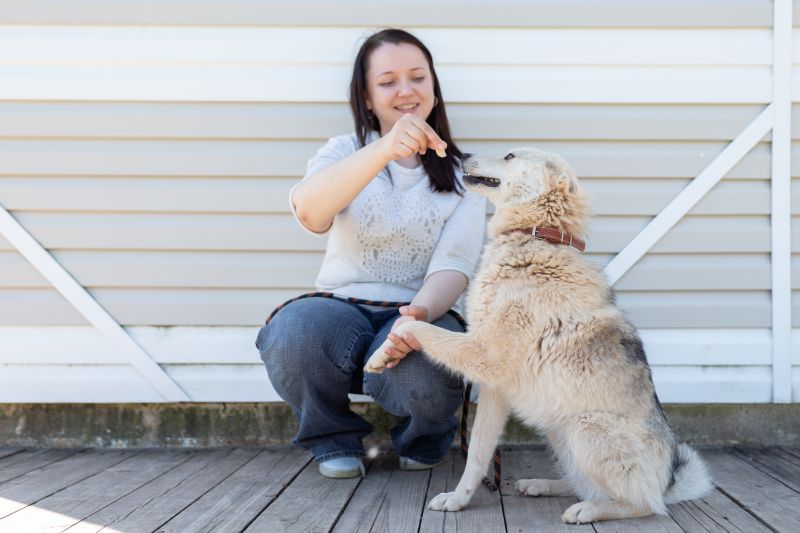
An easy way to improve a stubborn dog’s motivation is to use very enticing goodies. While some pups might work for a pat on the head or a cheerio, some dogs need higher-value stuff that makes what you’re asking worth their while.
If your dog is into food, think beyond kibble and the usual store-bought treats and consider some other options. Cooked meat and cheese are hits with most dogs, and many pups enjoy freeze-dried treats, which come in various flavors. Small pieces of cooked egg or bits of a peanut butter sandwich might blow your dog’s mind.
There are very few rules for using food as a reward; just make sure it’s safe for your dog to eat and doesn’t cause digestive upset. If it’s something your pup goes nuts for, you can use it during training to boost her enthusiasm.
You can also use your dog’s prized toys as a reward. If she’s a ball fanatic or a tug monster, leverage that excitement for your training goals.
Again, think outside the box when it comes to toys. Perhaps a real fur tug toy would absolutely make your dog’s day.
Even non-toy objects, such as an empty crunchy water bottle or a wool dryer ball, can be a high-value toy reward if it lights your dog up.
3. Practice, practice, practice.
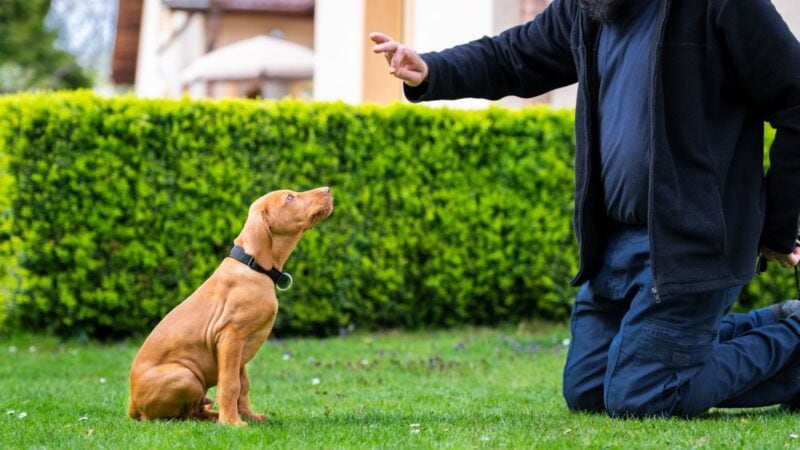
You can make steady progress toward your goal with a commitment to regular practice. Learning takes time and repetition.
Like humans, dogs can get rusty without sufficient practice. Consistent training keeps things fresh in your dog’s brain.
Regular practice also gives you many opportunities to take the next baby step toward your big goal.
Additionally, positive reinforcement training is an amazing way to build a strong bond with your dog. This can also help increase your pup’s motivation to respond when you ask her to do something. Your pup will begin to associate you with all the fun, happy feelings she experiences during your training sessions.
Most dogs do well with short sessions, lasting about one to five minutes long, and occurring several times a day.
4. Train in a calmer environment.

It’s hard for dogs to learn or respond in a distracting setting. Consider what environmental factors may be challenging for your dog. Then think about how you can control the environment so she can be successful.
You may need to go upstairs away from the rest of your family so your dog can focus more easily. Or drive to an empty park to practice her recall, instead of the busy park across the street.
Additionally, think about how the time of day affects the distraction level of different environments. When I was training my puppy to walk on a leash, I avoided taking him out when the school bus was dropping off kids. He became very excited and pulled a lot, so I adjusted our training to times when the neighborhood was calmer.
When your dog is successful in low-distraction settings, you can slowly add back distractions.
5. Be consistent.
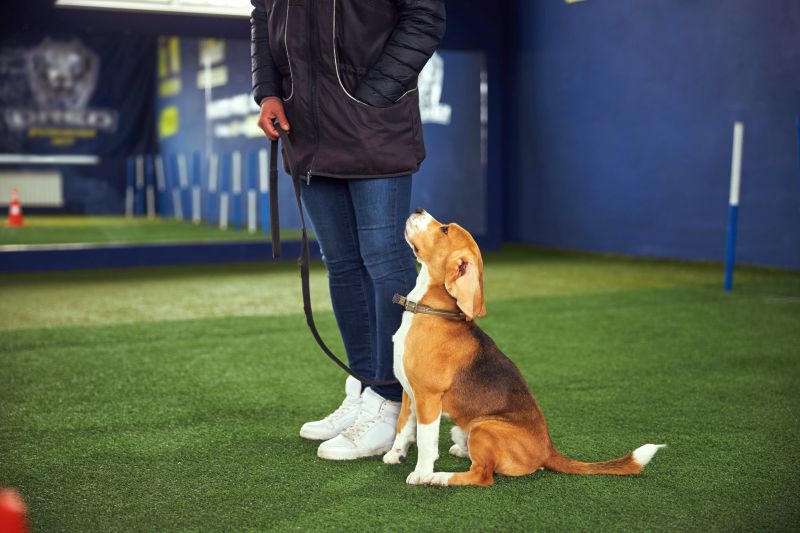
Sometimes it can feel like your dog isn’t listening when she’s just not sure what you’re asking due to a lack of consistency in your training.
In a multi-person household, each person might have his or her own way of doing things with the dog. This can be confusing for the canine. You can increase consistency by getting all household members on the same page when it comes to your dog’s routine and training.
Humans can be sloppy and use several words or signals for the same thing. An owner might say both “down” and “off” when asking the dog to get off the couch. Other times the human might snap and point to the floor. Stick with one cue for each behavior, so your dog has clarity and is more likely to respond.
6. Seek out professional help.
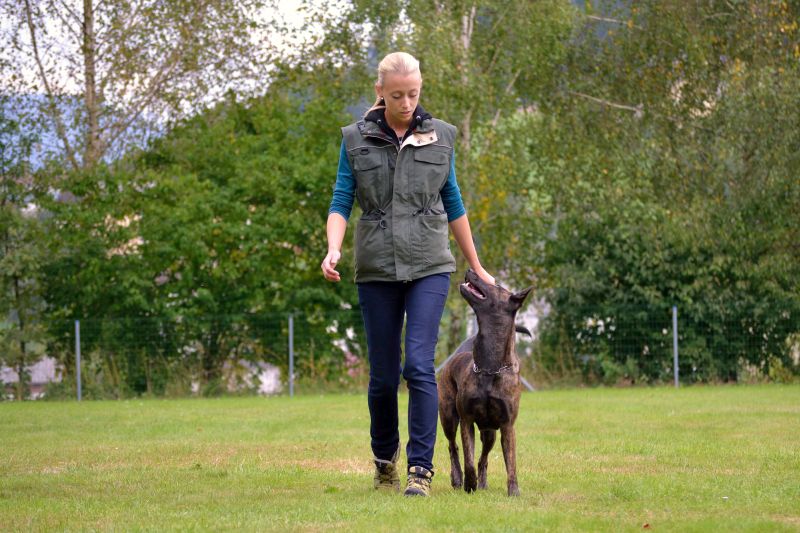
A professional trainer or behaviorist can help you and your pup overcome challenges and reach goals more quickly.
The internet is full of useful articles and free dog training videos. But nothing can replace the expertise of a skilled professional engaging with you to address your unique issues. He or she can help you troubleshoot, problem solve, and come up with fresh ideas you never would have thought of yourself.
Just be sure that you hire the correct type of pet pro for your specific needs. Specifically, you’ll need to decide whether you need a standard-issue dog trainer or a certified dog behavior consultant (sometimes called a behaviorist).
A trainer can help with things like manners and basic obedience. By contrast, a behavior consultant can assist with more serious behavior issues such as aggression, anxiety, and fearfulness.
Hiring a trainer or behaviorist can seem like a last resort. However, seeking professional help for a stubborn dog sooner rather than later often leads to better outcomes.
7. Keep training fun.

Dogs that seem stubborn are sometimes just bored and don’t see the point in what you’re asking her to do.
You can increase her enthusiasm by injecting some fun into your training.
Use a cheerful, higher tone of voice when giving a cue or praising your pup. A 2018 study published in Animal Cognition showed that dogs respond with more interest to “baby talk” than a regular speaking voice.
It’s also a good idea to incorporate some playful movement into training time.
Rather than asking your dog to sit or lie down 10 times in a row, break things up. Add in a game of chase, tug-o-war, butt scratches, or even chasing some tossed treats to give her a mental break.
Any enjoyable, movement-based activity can help prevent monotony and keep your dog hooked.
We already talked about leveraging high-value rewards for stubborn pups, but novelty is another way to make training fun. Rotate through a variety of foods or toys your dog loves to keep her engaged and wanting more.
8. Adjust your expectations.

Humans often have an idea of how life with dogs should be. But sometimes, reality doesn’t align with those expectations.
While that can leave you feeling defeated, it doesn’t necessarily mean that something is wrong with you or your dog
It’s possible that the traits associated with your dog’s breed or mix don’t mesh perfectly with your expectations.
You might feel your dog is being willful or stubborn, but she may just be highly social and have a hard time listening to you in the presence of new people. Or she is driven to hunt and literally can’t hear your call while chasing a rabbit.
Training can also take longer than initially expected. Some behaviors like walking on a leash, chilling in a crate, or coming when called might seem simple to humans, but they can be quite complicated for the dog.
You might feel like your dog should know these kinds of skills by now, but she’s an individual and progresses at her own pace.
Genetics, personality, past experiences, and the environment all play a role in your dog’s behavior. These factors can combine in ways that might make training different than what you expected.
In these circumstances, adjusting expectations can help ease negative feelings you have toward your dog, resulting in a more enjoyable relationship. We’re not saying it’s easy, but try to appreciate your dog for her unique self as you continue to work on her training.
9. Rule out medical issues.

Physical issues can affect a dog’s behavior. What appears as stubbornness, may be a health concern.
A dog who is in pain might be hesitant to get off her bed when you call her over. She’s not stubborn; she’s hurting.
Joint issues, tummy troubles, and auto-immune disorders, among other things, can cause a dog to be lethargic and depressed. She might have a hard time listening to you, or little interest in training with you, because she’s sick.
It’s worth consulting with your vet to see if any perceived stubbornness is a health issue, especially if it’s a sudden change in behavior.
Common Mistakes Owners Make with Stubborn Dogs

The tips discussed above can certainly help you deal with a “stubborn” dog, but it’s also important to understand some of the things – mistakes, really – that you should make sure you’re not doing.
Here are some of the top pitfalls to avoid if you’ve got a stubborn dog:
- Don’t ask for something you haven’t trained your pup to do. Try to only give a cue if you’re sure your dog will be able to respond. When you ask your dog to do something you haven’t prepared her for (and haven’t practiced repeatedly in easy, calm, and familiar environments), she’s unlikely to listen to you.
- Don’t punish your dog. You may feel tempted to resort to punishing your dog in an attempt to make her obey. Not only is this inhumane, but it is also an ineffective long-term solution. Punishment can cause your dog to fear or avoid you, making her even less likely to want to listen.
- Don’t repeat yourself. If your dog doesn’t respond to you the first time, it’s best to assume that she either doesn’t understand what you’re asking, or that the environment is too difficult for her. Avoid repeating yourself over and over. Repeating a cue incessantly weakens the meaning of the term for your dog.
- Don’t train an unfocused dog. When training a stubborn dog, you need to first have her attention. If she’s not focused, the session will likely not go well.
- Don’t assume your dog is “bad.” Working with a dog who seems stubborn can be frustrating, but writing her off as “bad” or “stupid” will only set you back and slow your progress — not to mention it’s not a very nice way to treat your pup, who is most certainly doing her best.
- Don’t overlook generalization. Generalization is the process of teaching your dog to respond to a cue in many scenarios. Just because your dog can sit in your kitchen, doesn’t mean she’ll know how to sit on the street corner, in the presence of another dog, or when company is over. Take time to practice in many locations and situations.
- Don’t expect your dog to know stuff without first training it. Dogs don’t speak human language, and it takes training for words to mean something to them. Without training, a dog isn’t likely to respond to “leave it” or “drop it” or any other cue.
Is Your Dog Really “Stubborn” Or Is She Just Having Trouble Understanding Her Cues?

When your dog isn’t listening despite your best training efforts, it can feel aggravating and it’s tempting to blame her. However, it’s important to consider that your pooch might actually be struggling to understand what you’re asking her to do.
Here are some questions to ask if you’re feeling stuck with a stubborn pup:
- How can you increase her motivation? Dogs aren’t robots and they don’t do things “just because.” Give your doggo a compelling reason to want to engage with you and respond to your requests by consistently using rewards she loves.
- How can you set up the environment for success? Remove distractions and choose training locations that won’t be more than your pup can handle at her current level.
- How can you break things into easier steps? Baby steps are much better than big leaps. It’s also OK to go back to an earlier stage if your dog is struggling to understand.
Finally, if you’re unsure whether your dog actually understands what you’re asking or is blowing you off, consider going back to square one and re-teaching the cue. While this might seem like a hassle and a lot of work, starting over with these tips can result in a more reliable and enthusiastic response from your dog.
Trying to change a dog who doesn’t seem interested in following your lead can certainly be a challenge, but it’s not an insurmountable problem. Just try to incorporate some of the tips and tricks we’ve shared above to get better results from your floof.
Is your dog “stubborn?” Do you often find that she’s unwilling to do the things you ask her to do? We’d love to hear about your experiences. Have you found anything that works for getting her attention? Have you found anything that absolutely does not work?
Let us know in the comments below!


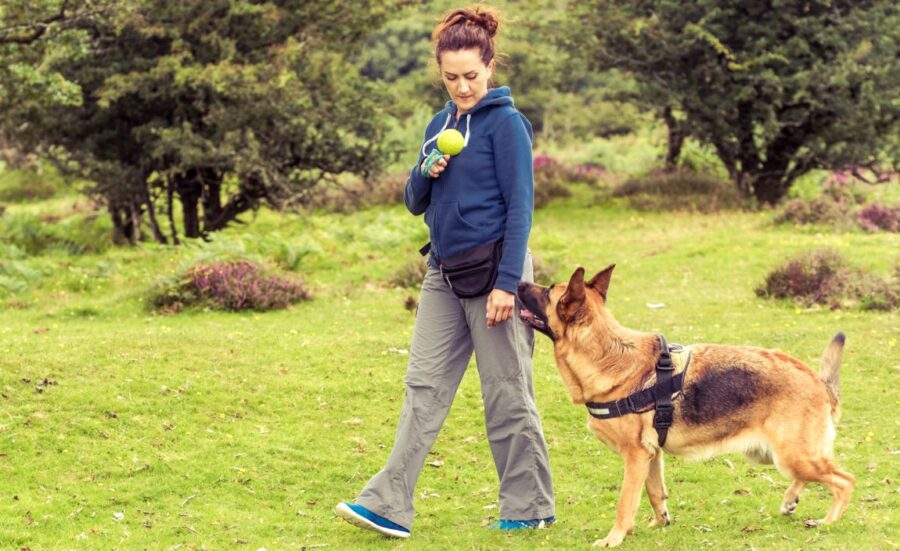


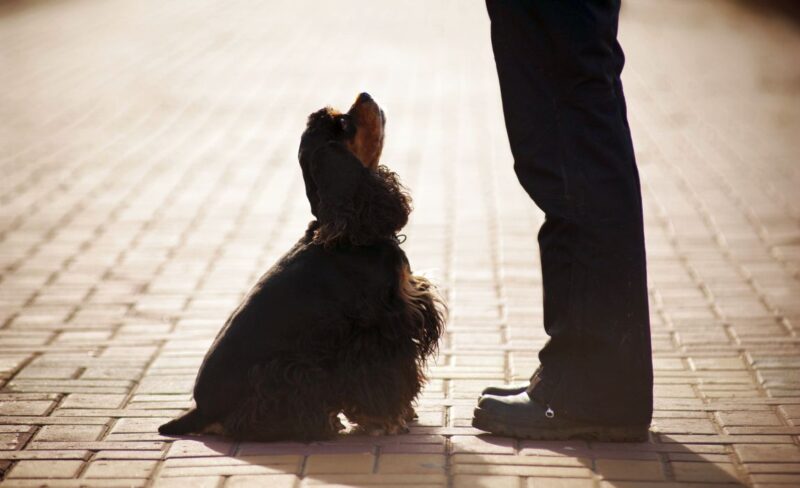

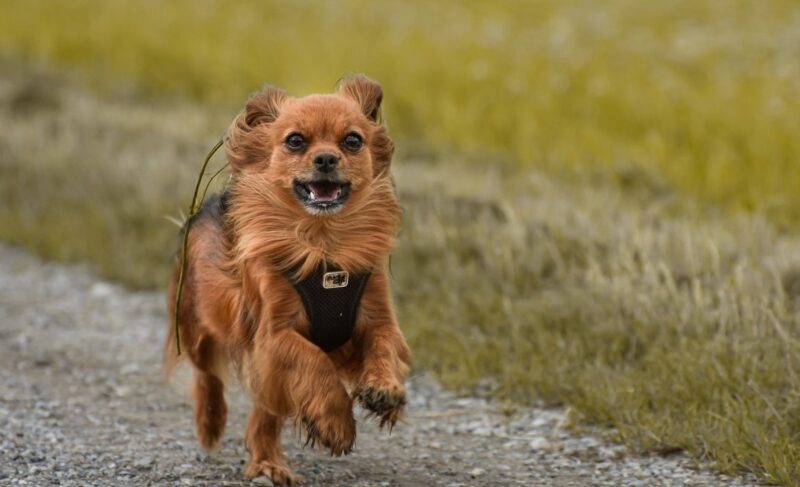
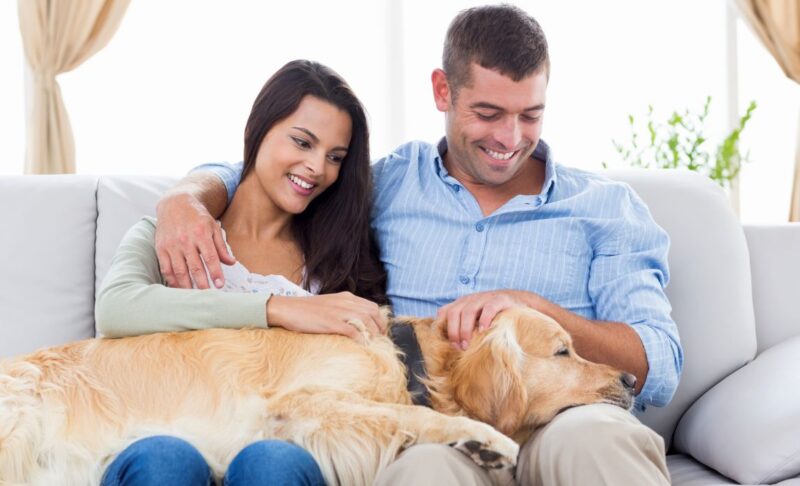
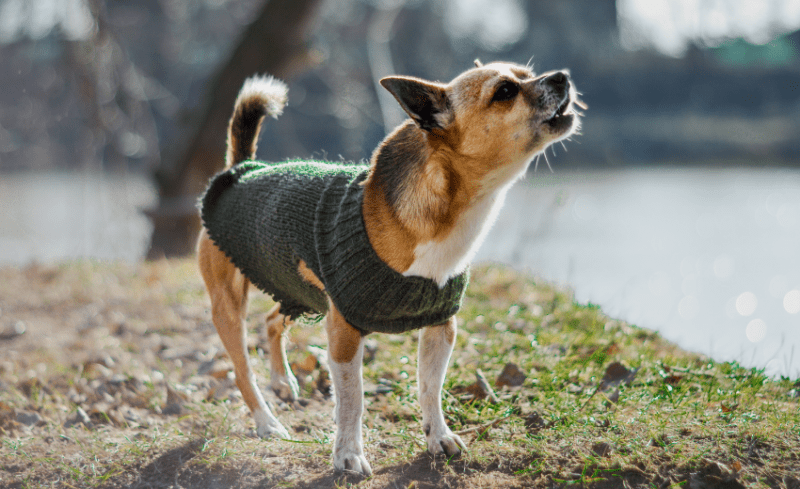


Leave a Comment